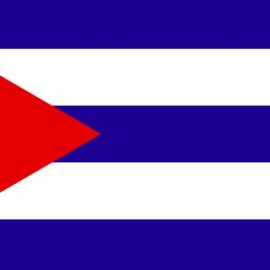

This article is an excerpt from the Shortform book guide to "The Code Breaker" by Walter Isaacson. Shortform has the world's best summaries and analyses of books you should be reading.
Like this article? Sign up for a free trial here.
What has CRISPR been used for in recent years? How has this groundbreaking technology impacted medical research and treatment?
CRISPR technology has revolutionized genetic engineering, opening doors to unprecedented applications. CRISPR’s potential seems boundless. Walter Isaacson’s book The Code Breaker explores these developments in detail.
Read more to dive into the world of CRISPR and its far-reaching implications for science and society.
What CRISPR Has Been Used For
What has CRISPR been used for? In his book, Isaacson describes many realized applications of CRISPR, but we’ll focus on three of the most momentous ones here.
Application #1: Designer Babies
First, in 2019, a Chinese scientist named He Jiankui created the first designer babies (modified humans created via germline gene editing). When the three babies were embryos, he edited a gene they had called CCR5, which makes you susceptible to HIV infection (but also protects you from West Nile Virus). The experiment was controversial because he blatantly disregarded the agreement science policymakers had made to pause germline editing. He faced international criticism and was convicted of criminal charges in China. His experiment led Doudna and other scientists to make a statement denouncing his actions and laying out guidelines for safer future experimentation with germline editing.
Application #2: Sickle Cell Gene Therapies
Second, CRISPR has been applied as a medical intervention in the form of somatic sickle cell gene therapies. This process involves taking stem cells from a sickle cell patient, editing the DNA in those cells to promote the production of healthy blood cells, and reinjecting the edited cells into the patient. Isaacson says that in 2020, the first patient to receive this treatment was cured of sickle cell disease. The treatment is expensive, and scientists believe germline sickle cell therapy could be more cost effective. However, extensive germline sickle cell therapy could be problematic: Most people with sickle cell disease live in parts of Africa where malaria is endemic, and the sickle cell gene protects you from malaria.
(Shortform note: As of 2023, US authorities had officially approved two CRISPR-derived somatic gene therapies for sickle cell disease, and there were over 200 patients receiving somatic gene therapies using CRISPR. However, these therapies remain expensive; the sickle cell therapy is estimated to cost $2 million per person. In case concerns about the loss of protection against malaria following sickle cell gene therapy become relevant, Doudna notes that CRISPR could be used to eliminate mosquitoes (the insects that carry malaria). However, this could also have profoundly negative ecological effects.)
Application #3: Covid-19 Diagnostic Tools
Finally, at the biotechnology organizations they founded, Doudna and Zhang spearheaded projects aimed at combating the Covid-19 pandemic. Isaacson says that bureaucratic obstacles prevented the US government from addressing the need for diagnostic tools quickly enough, so private scientists took the lead. Doudna and Zhang adapted diagnostic tools they’d created previously (to test for viruses like Zika and HPV) to diagnose Covid-19. They released simple, disposable, at-home tests for public use in April 2020 and freely shared their methods online so that anyone could use or enhance the technology. Doudna’s colleagues also invented a CRISPR-based vaccination method that may be adapted for use in future viral outbreaks.
(Shortform note: Doudna’s team at the IGI has continued its research on CRISPR-based Covid-19 tests, as has Zhang’s company. In addition to Doudna’s CRISPR-based vaccine, other scientists have used CRISPR to develop promising preventatives and treatments for the Covid-19 virus. Isaacson explains that Doudna’s CRISPR-based vaccine didn’t help much with the Covid-19 pandemic but has potential—the vaccines that did help were mRNA vaccines, and mRNA vaccine technology could be combined with CRISPR technology in the future to deliver gene therapies.)
| An Update on He Jiankui and His Designer Babies Research suggests that editing the CCR5 gene (the gene He Jiankui targeted in his designer babies) results in improved mental function. It’s possible that He Jiankui was aiming for this enhancement instead of the medical benefits he claimed as his motivation, since his experiment was neither medically necessary nor successful at protecting the babies from HIV and may have harmed their immune systems, endangering the babies’ overall health. He Jiankui served a three-year prison sentence before resuming his work on genetic science, which some experts note may lead to further experimentation with germline gene editing. As for the designer babies He Jiankui created, the scientist claims that they’re happy and healthy. However, since their identities are protected, nobody else has been able to verify this, and Chinese scientists believe that they could suffer from serious genetic conditions. |

———End of Preview———
Like what you just read? Read the rest of the world's best book summary and analysis of Walter Isaacson's "The Code Breaker" at Shortform.
Here's what you'll find in our full The Code Breaker summary:
- The fascinating story of the groundbreaking CRISPR gene editing technology
- Why CRISPR presents scientists and citizens with serious moral quandaries
- How CRISPR has already changed life as we know it—and how it has the potential for even more






